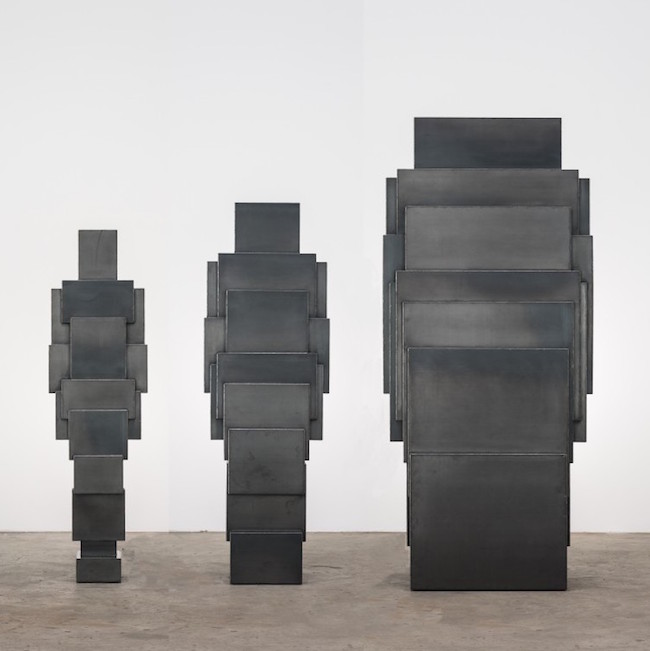Sir Antony Gormley’s sculptures put us in the mind of science fiction. His human figures look as though they’re being rendered deep within some forgotten subroutine of the universe’s programming. Left to its own devices, the program passes the time coming up with iterative designs on the human form, occasionally creating bodies that swell with stacked cubes or that emerge as blasts of static with the slightest suggestion of a person underneath all the noise. See one of his works and you can feel the humming of an ancient machine under the soles of your shoes.
Above image: Antony Gormley, EXPANSION FAMILY X 5: PROP, 2014
Writing for the Financial Times last month, Gormley related a personal experience that revealed a epiphany of immaculate design, coupled with a feeling of impossible age. He visited the Dwarfie Stane, a Neolithic tomb in a valley in Scotland. He describes the experience:
You crawl inside and can lie with your knees up in one of the two chambers either side of a central passage. Both are just big enough to accommodate a body. One of the cot-like spaces even has a stone pillow.
This is known as the Dwarfie Stane, but it feels like a spaceship crossed with a meteorite crossed with a nursery-room bunk bed.
Confronted with a palpable atmosphere of history and a purpose that will play out over eons, Gormley was inspired to write about art and sculpture. He lifts sculpture out of its present context (our art markets and fairs seem like dalliances as you project yourself further and further into the future) and tries to peer into the essence of what people have tried to accomplish with the artform. We suggest you read his post in its entirety and enjoy a masterful artist writing like Isaac Asimov or Arthur C. Clarke.
Sculpture can transform a site into a place through an act of will. Sculpture is our dialogue with the earth, whether formed by the early farmers carving the Stane, by Richard Long making a line of stones in the Himalayas, or by the prehistoric draughtsmen of the chalk horse at Uffington in southern England. Our need is to leave a trace: a trace of our living and dying on the face of an indifferent universe. Sculpture’s central purpose in confronting the body with another materiality is to engage the imagination, to make links with all that lies beyond the palpable and the observable, deep in space or deep in the unconscious mind.
In a time when art has become commodified and institutionalised and when we go to museums to experience “Art”, I believe in the ability of sculpture as a first-hand experience to move us and to shift our goal-orientated consciousness somewhere deeper and wider. Art has always been “for all”, in Gilbert & George’s words. The making of it is an act of hope — and sculpture in particular is a talisman for continuance. I like to think about the idea that there will be some people, some intelligence in the future that will connect with these gestures of human manufacture and understand that they do not fulfill the desire for comfort but the need of the imagination to have both catalyst and testimony. Art is what we do to express life beyond life. The objects’ existence in time becomes part of our lives, even if their meaning is not clear to us or their story obscure, they become part of our story, a tribute to the need for mystery in the heart of the known.
Love contemporary ceramic art + design? Let us know in the comments.

Photographs courtesy of the artist.



Add your valued opinion to this post.